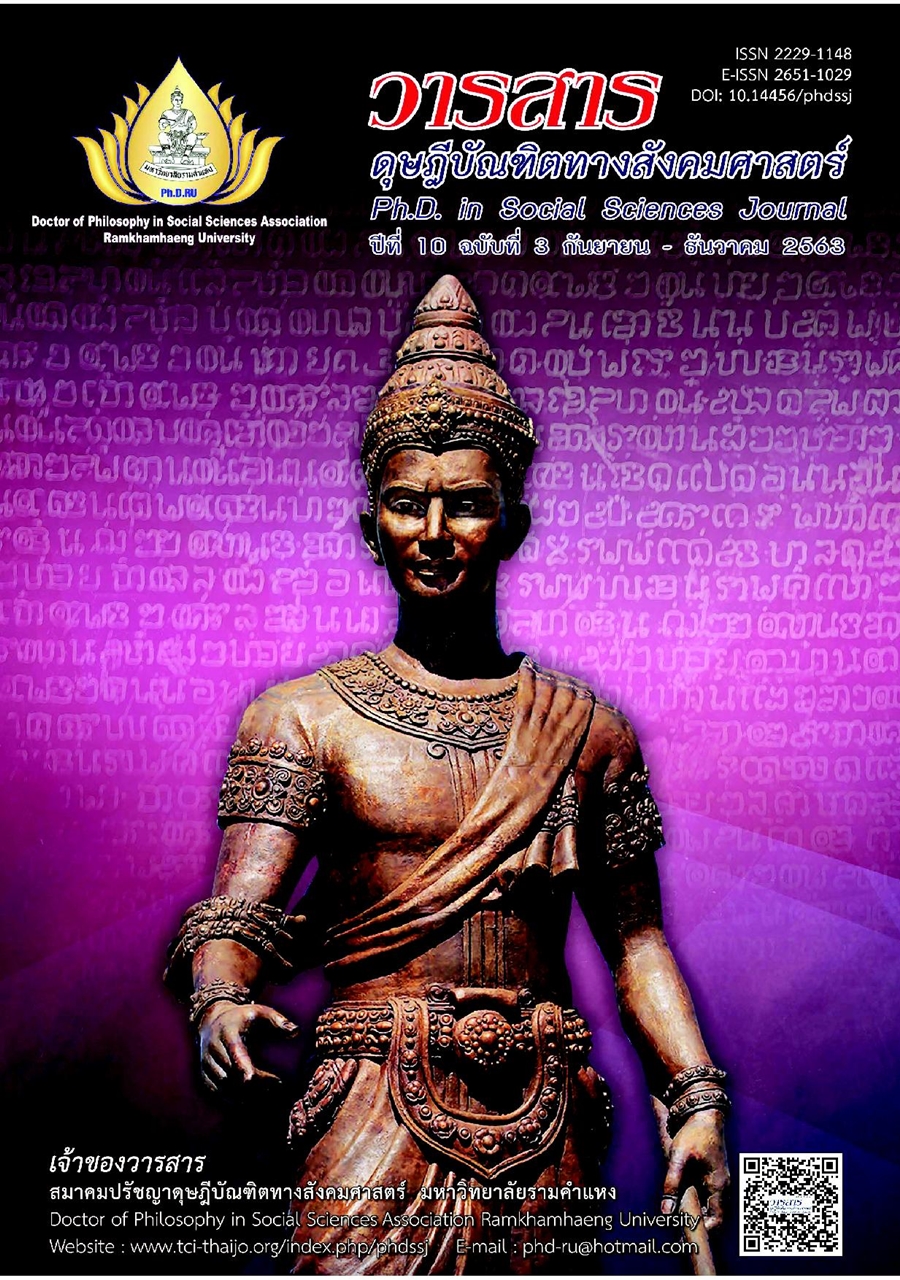The Development of Agility Potential of Enterprises for Cost Reduction and Responsiveness in Creating Sustainable Competitive Advantage
Main Article Content
Abstract
In this research, the development of potential of entrepreneurs of leather footwear industry manufacturers for export from the Kingdom of Thailand (Thailand), making the organization to be flexible, by raising the level of production potential to gain agile capabilities, reduce cost, be able to respond to the market and network and raise sustainable competitive advantage. In this research, the researcher employed mixed-methods research approach, quantitative and qualitative research methods. For the quantitative phase of research, the researcher used questionnaire to a sample of 250 export manufacturers of leather footwear from the data of Textile Industry Policy Research and Information Service Department . In the qualitative phase of research, the researcher carried out individual in-depth interviews with key informants who are executives from 16 footwear manufacturers for export.
Findings are as follows: Organizational flexibility, manufacturing potential raising, agility capabilities, reduction of cost, responsiveness to the market and network and sustainable competitive advantage exhibited relationships between variables clearly in consonance with the guidelines of the Footwear Export (FE) Agility Enterprise model.
Article Details
Academic articles, research articles, and book reviews in the Ph.D. in Social Sciences Journal are author’s opinions, and not the publisher’s, and is not the responsibility of the Ph.D. in Social Sciences Journal Philosophy Association, Ramkhamhaeng University. (In the case that research is done on human, the researcher has to be trained in Ethics for Doing Research on Human Training and has to produce the evidence of the training).
References
Babaei, H., Ramesani, A., & Khanuki, A. A. (2013). Developing a model for agility of business organizations based on supply chain processes: A case study of automobile industry in Iran. Australian Journal of Basic and Applied Sciences, 7(4), 750-759.
Moniruzzaman, M., Kurnia, S., Parkes, A., & Maynard, S. B. (2015). Business intelligence and supply chain agility. Australasian Conference on Information Systems, Adelaide, South Australia., 1-16.
Perera, S., Soosay, C., & Sandhu, S. (2014). Does agility foster sustainability: Development of a framework from a supply chain perspective. University of South Australia Business School. Adelaide, Australia., 1-19.
Sapra, G. (2016). Enterprise agility: Positioning the right mix of drivers and enablers. NIMHANS Convention Centre, Bengaluru, Karnataka., 1-15.
Sharifi, H., & Zhang, Z. (1999). A methodology for achieving agility in manufacturing organizations: An introduction. International Journal of Production Economics, 62(2), 7-22.
Sherehiya, B., Karwowski, W., & Layer, J. K. (2007). A review of enterprise agility: Concepts, frameworks, and attributes. International Journal of Industrial Ergonomics, 37(5), 445-460.
So, S., Parker, D., & Xu, H. (2012, June). A conceptual framework for adopting sustainability in the supply chain. Paper presented at the conference ANZAM operations, supply chain & service management symposium, Melbourne, Australian., 1-17.
Teece, D. J. (2007). Explicating dynamic capabilities: The nature and micro foundation of (sustainable) enterprise performance. Srinagarind Medical Journal, 28(13), 1319-1350.
Thailand Textile Institute. (2018). Textile and garment factory during January-September 2017. Retrieved from https://www.thaitextile.org/th/insign/detail.160.1.0.html [In Thai]
Triaa, W., Gzara, L., & Verjus, H. (2016). Organizational agility key factors for dynamic Business process management. Paper Presented at the Conference on the 18th IEEE Conference on Business Informatics. Paris, France. pp.1-11.
Tseng, Y. H., & Lin, C. T. (2011). Enhancing enterprise agility by deploying agile drivers, capabilities and providers. Information Sciences, 181(17), 3693-3708.
Wang, R. (2011). A taxonomical study of agility strategies and supporting supply chain management practices. University of Exeter.
Yamane, T. (1976). Statistics: An introductory analysis (2nd ed.). Harper& Row.


